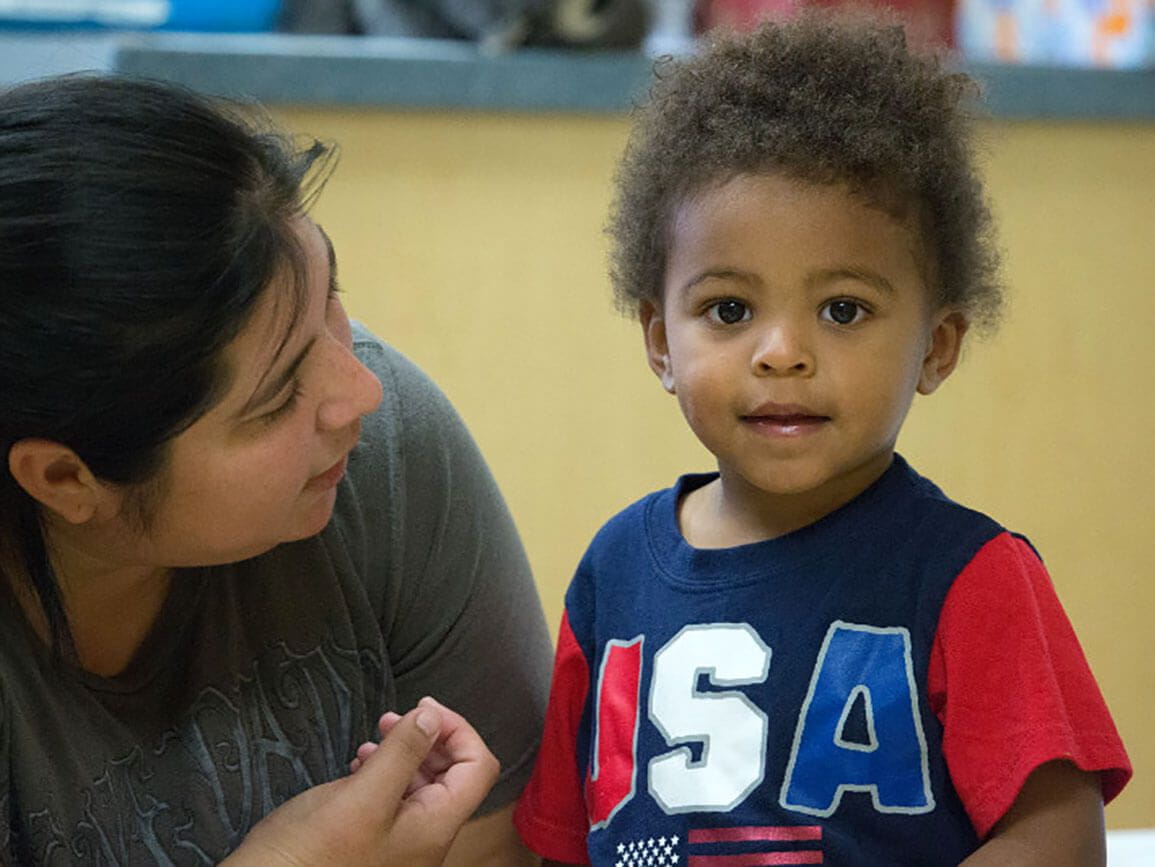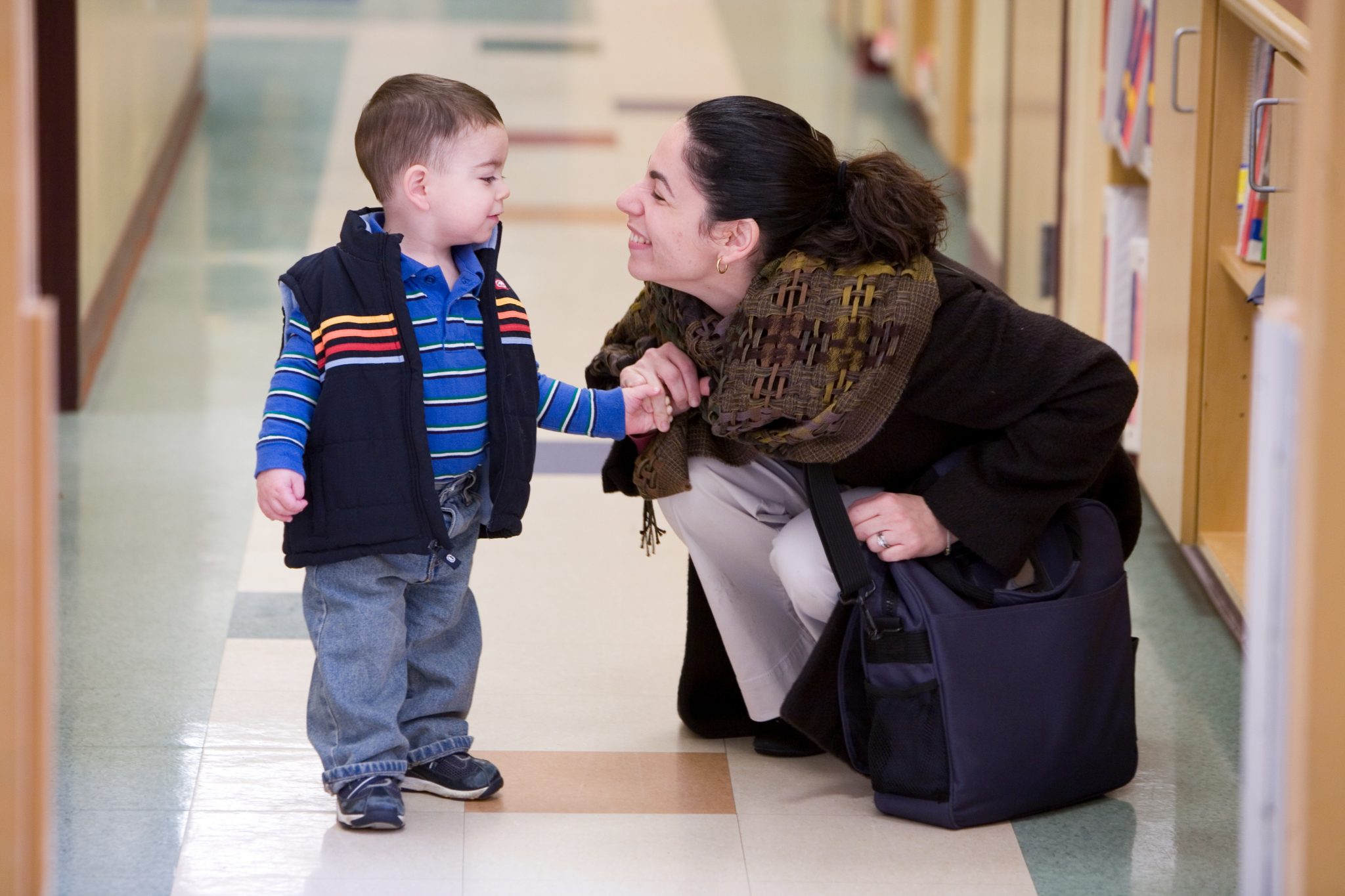In many early childhood classrooms you will often see meals served "family style." Children and teachers sit together at tables, serve themselves from child-size platters, pour drinks from small pitchers, and share thoughts and experiences as they eat.
When spills and splatters occur, children (with teachers' guidance) wipe them up. Before the meal, children help set the table and afterwards, clean their own area. Parents sometimes wonder, "What's the magic? Why does my child eat at the table so calmly in school, but at home I have to cajole her to just sit down and then beg her to eat healthy foods?"
There is no "magic" but family style dining helps with child development as it connotes everyone sitting together at a table, serving themselves, and sharing thoughts. Normally, the atmosphere is calm and promotes unity. Self-service fosters independence and empowers children to feel in control of their choices, thus eliminating power struggles. Teachers and children encourage one another to try different foods.
How Child Development Improves with Family Style Meals
- Children learn cooperation and social skills as they practice patience by sharing, passing platters, taking turns, waiting, and using appropriate language and manners.
- It helps develop language skills as they engage in teacher or other student-inspired conversations, share the best and worst part of their day, play word games, make up stories, or discuss current events relevant to their age group.
- Family style dining expands fine motor skills as children serve themselves, learn to hold flatware, and pour their own beverages.
- Children learn mathematical skills, including spatial relationships and one-to-one correspondence, e.g., sorting and counting the flatware, setting the table, or placing the chairs.
- Dining together deepens relationships and friendships in a relaxed atmosphere where children can focus on one another without outside distractions.
After visiting a classroom, parents might wonder how family style meals can happen at home. Here are a few family meal tips from child care centers and preschools that you can do at home to help with your child's development:
- Resist the temptation to pre-fill your child's plate.
- Instead, try some child-sized bowls, serving utensils or pitchers. Children can use plastic tongs or a large spoon to serve and plastic measuring cups with a spout to pour.
- Encourage everyone to sit down together and one-at-a-time share something good about their day.
In reality, we're replicating what many families already do. Think about enlisting your child's help to prepare a meal, dine together and clean up afterwards. With no electronic interference, you'll discuss their day, as well as model manners and appropriate interactions.
- Learn the benefits of eating together as a family and get dinner planning tips.
- Find 7 simple steps for keeping family dinners on schedule.
- Watch our webinar for simple nutrition tips & strategies for growing a healthy eater.
- Our blogger discusses the pros an cons of serving pre-plated vs. family-style meals.
- When children help prepare meals, they learn valuable lessons about family togetherness, healthy living, tradition, and even math/science/literacy skills. Find some of our bloggers' favorite meals and recipes that their kids love helping to make.
- Do you struggle with trying to get your kids to try new foods? Try this fun green veggie "taste test" game. And, then, give one of these green veggie recipes a try: Family-Friendly Broccoli Dishes, Green Spinach Muffins, or Cheesy Zucchini Biscuits.





